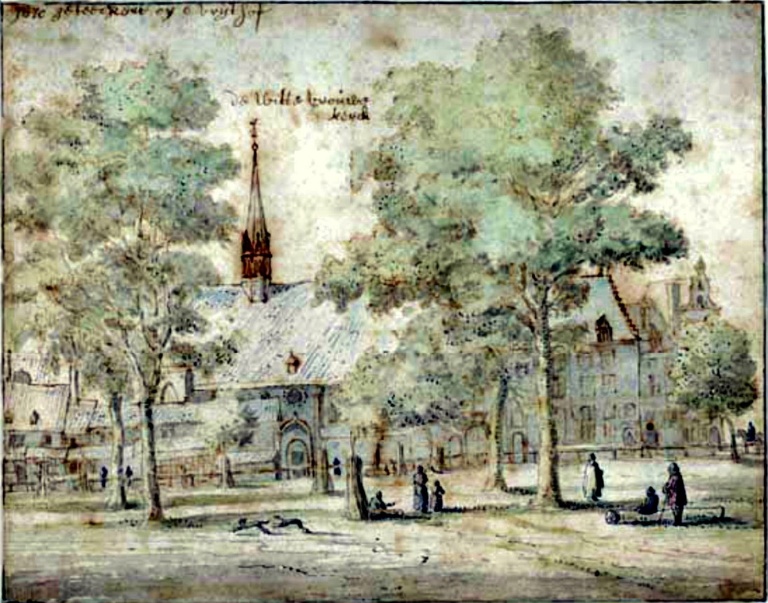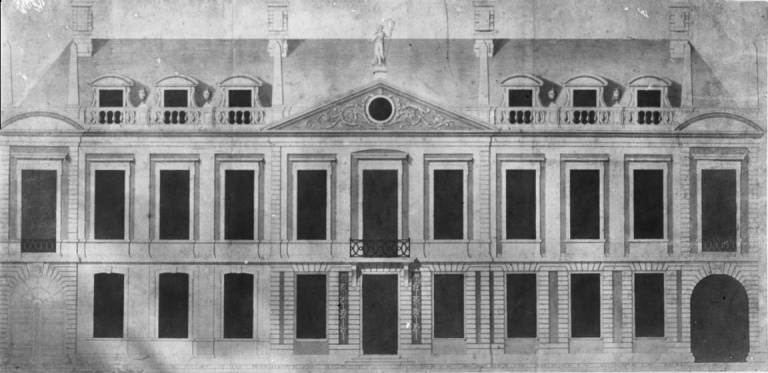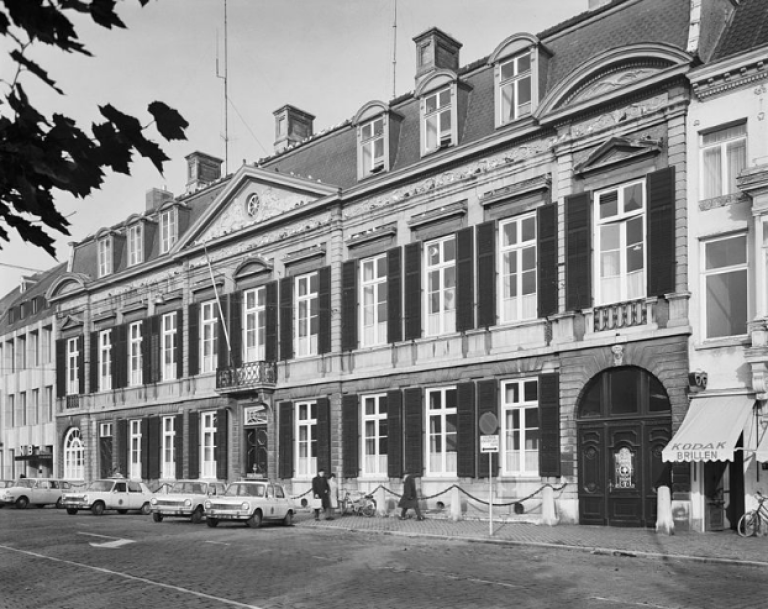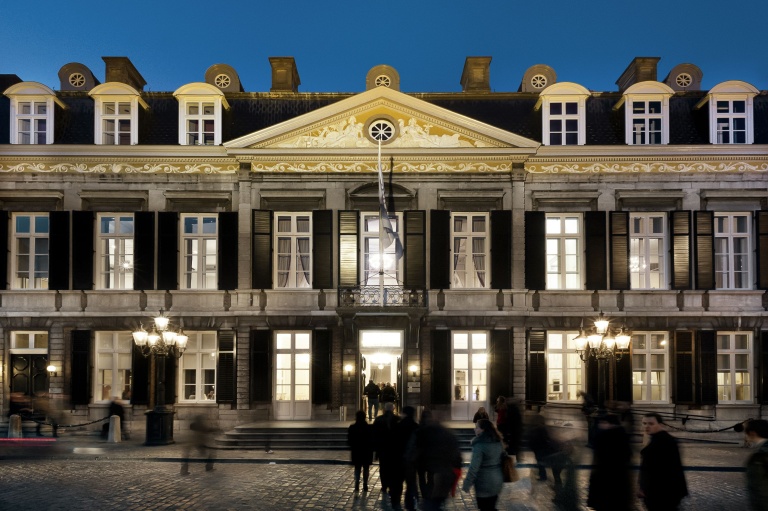History
From palatine to monastery to general house. Discover the complete history of Theater aan het Vrijthof.
A millennium ago, Maastricht was the capital of an area that stretched from Friesland to the Vosges: Lower Lorraine. It took almost a thousand years before the spectacular discovery was made that the Vrijthof from the Dutch era did not count one but two magnificent buildings. The Vrijthof was not only the square of the Basilica of Saint Servatius, but also the square of the palatine. Thanks to the ancient soil investigation that took place from November 1988 to August 1989, we now know that from 1000 to 1200 on the north side of the square there was a large ducal palace.
In 1224, a nunnery was erected on the site of the palace, as a death blow to the secular power of the Duke of Lorraine, who formerly lived in the palace. In that year, at the initiative of Rudolf van Worms in Hildesheim, the congregation of the White Women was founded. The objective of this order was: conversion of 'fallen women'. Officially the Congregation was called Penitents of the Blessed Virgin Mary, but everyone spoke of White Women because of the white convent clothing.
The monastery was built on the foundations of a secular building, five centuries later - in 1805, to be precise - a secular building was built on the foundations of the convent church: the General House. The client was a merchant in tobacco and madder, Petrus de Ceuleneer, who commissioned François Hermans in 1803 to design and build the General House.
In 1914 the building was sold to the Municipality of Maastricht. The building was successively the home of the municipal museum, the municipal recipient, the city archives, city library and the municipal police.
The run-up to the theater at the Vrijthof
It may be disputed when the genesis of Theater aan het Vrijthof commenced. Four years are eligible: 1948, 1978, 1981 and 1989.
In 1948 the monthly magazine Kunstschouw was established, which presented itself as the official organ of the Maastricht City Theater, the Maastricht Stedelijk Orkest and the Maastricht Art Circle. In the second and third issue, in preparation for the upcoming 160th birthday of the Stadsschouwburg on the 27th of October of that year, the history of theater life in Maastricht was reviewed. The article series ended with an intriguing remark: 'Centuries pass and at the commemoration of the 160th anniversary we look forward to the new city theater located at the Vrijthof, at the police station.'
The second possible starting point of the history of Theater aan het Vrijthof is 1978. In that year a reserve of 55 million euros was provided in the municipal budget in the long-term plan that was presented to the municipal council of Maastricht. 7.5 million of that amount could be committed as a designated reserve for a new accommodation for musical performances, of which 2.5 million was reserved for running costs. The starting point of the Muziekhuis was the program of requirements for the future users: the Cultural Center and the Limburg Symphony Orchestra (now known as Philzuid).
On 15 August 1981 'the realization of a music house in and behind the General House' was given the green light. But Theater aan het Vrijthof had a financial gap that had to be filled from sponsoring from the private sector. The then mayor of Maastricht, Philip Houben, was convinced that sponsors would succeed. And indeed, he even managed to get more than the necessary sponsor money. The names of the so-called 'Gulle Gevers' have also been given a place of honor in the building. One of the major sponsors was the Royal Dutch Paper factory Maastricht, after which the large auditorium was named; the Papyrus Hall.
On May 13, 1985, the restoration of the General House was started and in 1987 the plan was presented to the municipality to make a theater of the music house at the Vrijthof. Thus the name Theater aan het Vrijthof was born 'a name that sounds and sings' according to Mayor Houben. On 13 December 1989 the official renovation of the theater began. Behind the general house the theater was built after a design by Arno Meijs, who also designed a number of theaters by Joop van den Ende.
Theater aan het Vrijthof
Mr. Philip Houben opened the theater on January 4, 1992 with a memorable Try Out Night. A solo performance with own texts, conferences and songs composed by Tonny Eyk. This evening was a tribute to all twenty-nine 'Gulle Gevers' (generous donors). The first national artist was André van Duin with the Revue. Around 5,000 visitors were given the opportunity to attend. Theater aan het Vrijthof was officially opened in March 1992. An event that was broadcast live on television. The first director of the new theater was Piet van Hest, former documentary maker at the KRO. In 2001 he was succeeded by Jacques Giesen, followed by Guido Wevers and Hugo Haeghens and the current director is Jean Boelen.
The Papyrus Hall got its first refurbishment in 2003. All seats have been replaced, more seats have been created and more legroom has been created. In 2004, the stage tower was raised and the tractor walls were fully automated. In 2017 Theater at the Vrijthof was 25 years old and a new renovation was planned. The first phase has continued in 2017, where the changing rooms, toilets, showers and foyer for the visiting artists and the public toilet groups have been renovated. The second phase started on 4 June 2018. In this phase, the Papyrus Hall is renovated with innovative acoustics, theater technical infrastructure and new theater chairs. The renovated Papyrus Hall was reopened festively on 4 and 6 October 2018.

Vrijthof with Wittevrouwen Monastry (Valentijn Klotz, 1670)

Sketch front of house by architect Hermans

General's house as police station in the '60s

General's house as Theater aan het Vrijthof